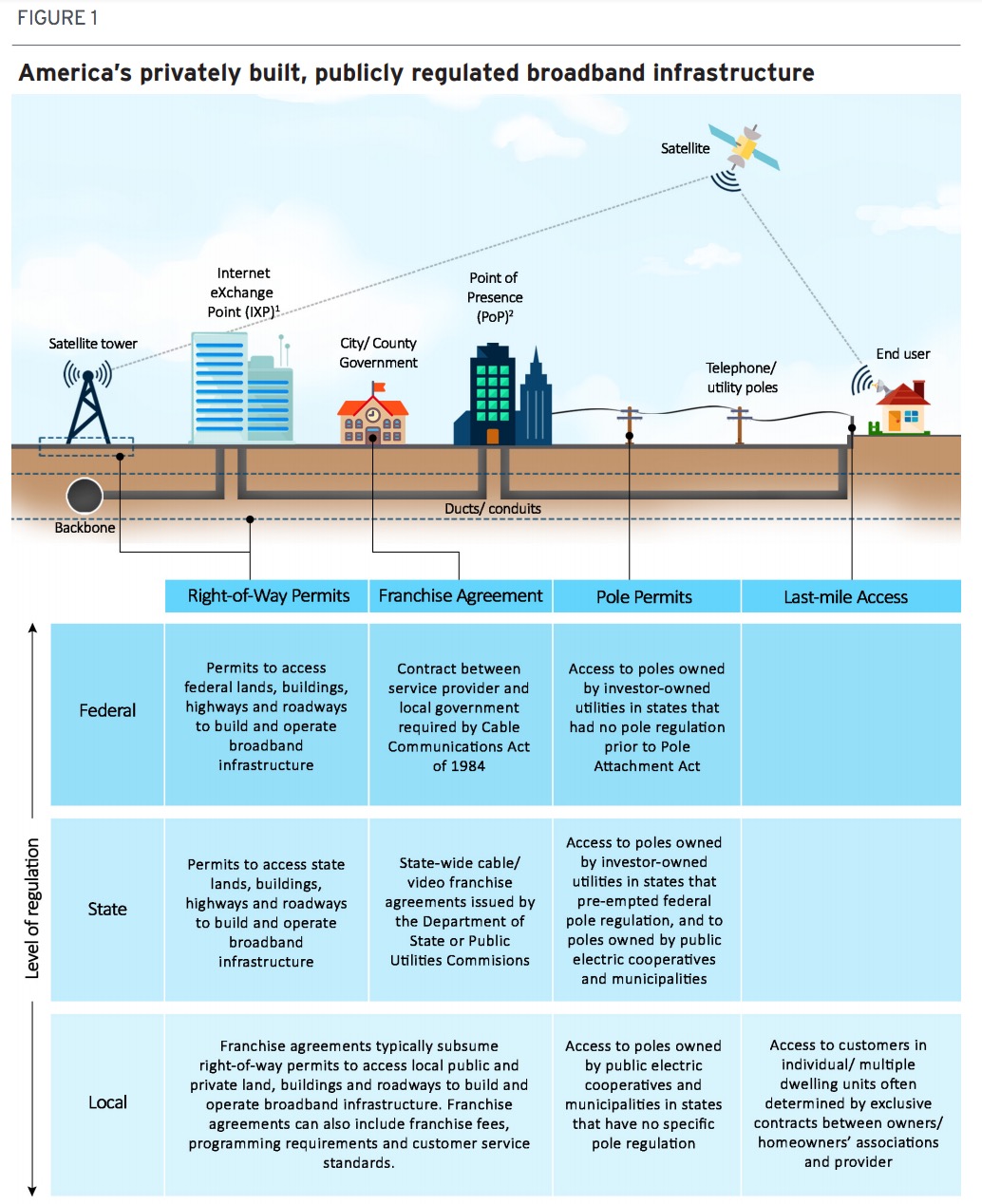BROOKINGS INSTITUTION
METROPOLITAN POLICY PROGRAM
Executive Summary
The internet is now a fundamental component of the American economy, creating new ways to educate, employ, bring services to, and entertain every person. Broadband, especially wireline broadband in American homes, is the essential infrastructure for unlocking the internet’s economic benefits. However, broadband infrastructure is far from ubiquitous, both in terms of where it operates and who subscribes to it, and those deficits are not shared evenly across the country. As such, policymakers have a responsibility to understand a national digital divide that has different contours depending on the place.
Using data from the Federal Communications Commission and the American Community Survey, this paper assesses broadband’s deployment and consumer subscriptions at the census tract level. It finds:
As of 2015, broadband services were available to 93 percent of the nation’s population, but large availability gaps existed in lower-density areas. In December 2015 the vast majority of residents in the United States lived in communities served by wireline broadband that offered download speeds of at least 25 Mbps. However, more than 22 million people lacked such services in their neighborhoods. Geography, rather than demographic characteristics, is the predominant factor determining broadband services available to them: more than half of residents who lack access to broadband live in rural America.
Most major metro areas offer near complete broadband coverage to their residents, but lowerdensity, more agriculturally focused regions in the South and West lag behind. Among the 100 largest metro areas, five in Florida and five others— ranging from Akron, Ohio to Salt Lake City—have achieved 100 percent broadband coverage for their residents. Yet even among metro areas with near universal broadband availability, deployment gaps can leave tens of thousands of residents without the option of broadband.
Over 73 million people (23 percent of the nation’s population) live in neighborhoods where in-home broadband subscription rates fall below 40 percent. In contrast, just 18 percent of the nation live in neighborhoods where subscription rates exceed 80 percent. Neighborhoods most likely to lag behind are those with lower incomes, lower educational attainment levels, and an aging population.
Nearly every large metro area includes neighborhoods with subscription rates below 40 percent, but the gaps are largest in less dense regions. Over half of the population in metropolitan McAllen, Texas, Albuquerque, N.M., and Boise City, Idaho live in neighborhoods where subscription rates fall below 40 percent. Conversely, in metropolitan Washington, Honolulu, and four other metro areas, over half the population lived in neighborhoods with subscription rates over 80 percent.
Eighteen of the 20 metro areas that rank highest on a combined index of broadband availability and subscription are in Florida, the Northeast, and the Pacific Coast. Top performers include some of the nation’s largest metro areas like New York and San Francisco, but also relatively smaller places like Palm Bay, Fla. and Oxnard, Calif. Conversely, 15 of the 20 lowest-ranking metro areas lie largely in the Southeast and Great Plains.
While the nation still falls short of complete broadband coverage—especially in rural America— geographic and demographic disparities in who subscribes to wireline broadband subscription drive today’s digital divide. Addressing the availability and subscription gaps that limit economic opportunity in specific neighborhoods requires a balanced policy framework and collaborative partnerships between the private, public, and civic sectors. Considering that broadband is essential infrastructure in today’s digital economy, the status quo limits American competitiveness and equitable access to economic opportunity. Less than two decades into the new century, the internet is already an unquestioned foundation of the modern American economy and the American home.
About the Brookings Institution Metropolitan Policy Program
www.brookings.edu/program/metropolitan-policy-program
Cities and metropolitan areas are the hubs of the national and global economy and the primary places where people seek jobs and opportunity. They are at the forefront of the major demographic and social changes confronting the nation. Our mission at the Metropolitan Policy Program is to deliver research and solutions that help metropolitan leaders build an advanced economy that works for all.
Tags: Brookings, Brookings Institution, Internet, Internet Access, Metropolitan Policy Program, web







 RSS Feed
RSS Feed